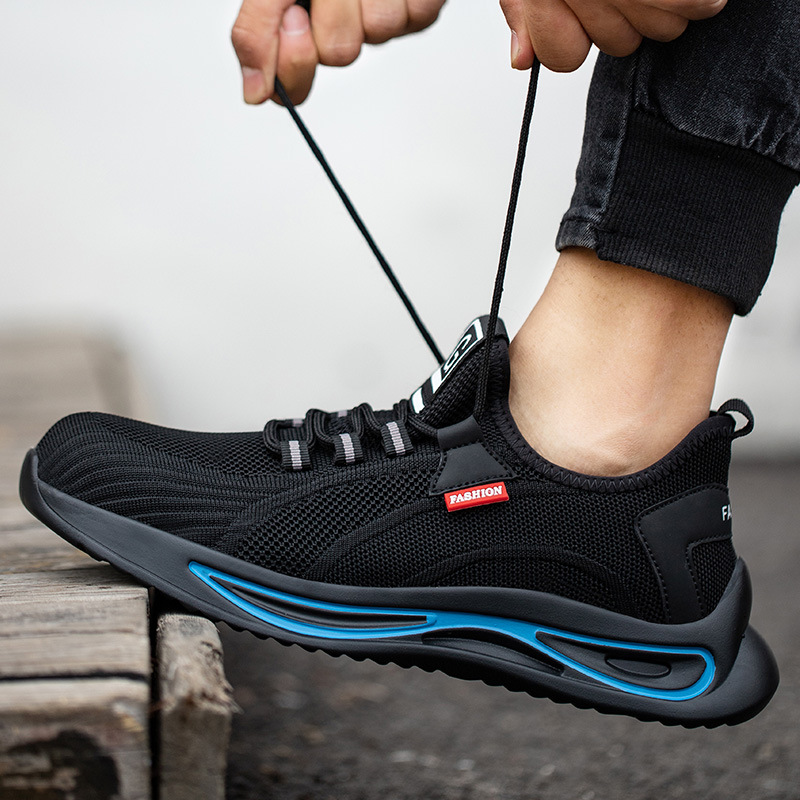How Long Do Safety Shoes Last? Understanding the Lifespan of Your Protective Footwear | 2023
Introduction
When it comes to workplace safety, you ever wondered how long do safety shoes last before they need to be replaced?. one of the most crucial yet often overlooked components is footwear. Safety shoes are designed to protect the feet from various hazards, including falling objects, sharp materials, electrical shocks, and slippery surfaces. but like any other piece of personal protective equipment, safety shoes have a limited lifespan. In this article, we’ll delve into the factors that affect the longevity of safety shoes, how to extend their lifespan, and why investing in quality safety footwear is essential for every worker’s well-being.
Understanding Safety Shoes Lifespan
Safety shoes, depending on their construction and materials, have an average lifespan of six months to two years. This estimation can vary significantly due to factors like frequency of use, work environment, and the wearer’s gait and weight distribution. While some workers may get away with using their safety shoes for a longer duration, it’s essential to know that worn-out shoes compromise protection.
Factors Affecting Lifespan

Frequency of Use
The more often safety shoes are worn, the quicker they’ll deteriorate. Those who wear safety footwear daily, especially in demanding environments, may need to replace them more frequently.
Work Environment
The nature of the work environment plays a significant role in safety shoe longevity. Industries with harsher conditions, such as construction or manufacturing, can cause increased wear and tear.
Shoe Material
The quality of materials used in manufacturing safety shoes impacts their lifespan. Opting for high-quality leather or synthetic materials can prolong the shoes’ durability.
Proper Maintenance
Neglecting regular maintenance can significantly shorten the lifespan of safety shoes. Cleaning, inspecting for damage, and storing them correctly are crucial steps for longevity.
Fit and Comfort
Ill-fitting safety shoes not only affect productivity and comfort but can also lead to increased wear on specific areas, reducing their lifespan.
Weight Distribution and Gait
An individual’s weight distribution and gait affect how pressure is applied to the shoes. Those with an uneven gait may experience faster wear on one side.
3. Extending the Lifespan
Rotate Shoes
Encouraging workers to rotate between two pairs of safety shoes can help extend the lifespan of each pair by reducing daily wear.
Store Properly
Storing safety shoes in a cool, dry place away from direct sunlight prevents material degradation and helps maintain their structural integrity.
Regular Cleaning
Cleaning safety shoes regularly removes dirt and debris that can cause premature wear. Additionally, it allows for early detection of potential damage.
Prompt Repairs
Addressing minor damages promptly can prevent them from escalating into more severe issues, thus extending the overall lifespan of the shoes.
Replace Insoles
Replacing insoles at regular intervals not only enhances comfort but also provides additional support to the footwear.
The Importance of Investing in Quality Safety Shoes
Investing in high-quality safety shoes is a crucial aspect of workplace safety. Not only do they last longer, but they also offer superior protection against various hazards, reducing the risk of workplace accidents and injuries.
Conclusion
Safety shoes are an indispensable part of personal protective equipment for workers in various industries. Understanding the factors that affect their lifespan and taking necessary measures to extend it is vital for ensuring optimal protection. By investing in quality safety footwear and following proper maintenance practices, workers can experience enhanced comfort, improved safety, and extended longevity for their safety shoes.
FAQs
Q1: How often should I replace my safety shoes?
The lifespan of safety shoes can vary, but it’s generally recommended to replace them every six months to two years, depending on factors like frequency of use, work environment, and shoe material.
Q2: Can I extend the lifespan of my safety shoes?
Yes, you can extend the lifespan of your safety shoes by practicing regular maintenance, such as cleaning, inspecting for damage, and storing them correctly. Rotating between two pairs and addressing minor repairs promptly can also help.
Q3: How do I know if my safety shoes need replacing?
If you notice significant wear and tear, sole separation, compromised protective features, or discomfort due to an ill fit, it’s time to consider replacing your safety shoes.
Q4: Are all safety shoes the same?
No, safety shoes come in various types and designs to cater to different workplace hazards. It’s crucial to choose the right safety footwear based on the specific risks present in your work environment.
Q5: Why is it important to invest in quality safety shoes?
Investing in high-quality safety shoes is essential because they offer superior protection, durability, and comfort. Quality footwear reduces the risk of workplace accidents and ensures the long-term well-being of workers.


Leave a comment